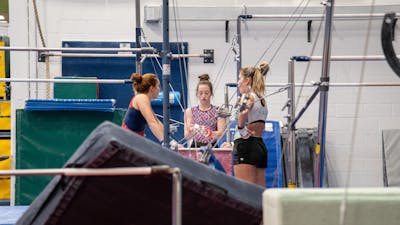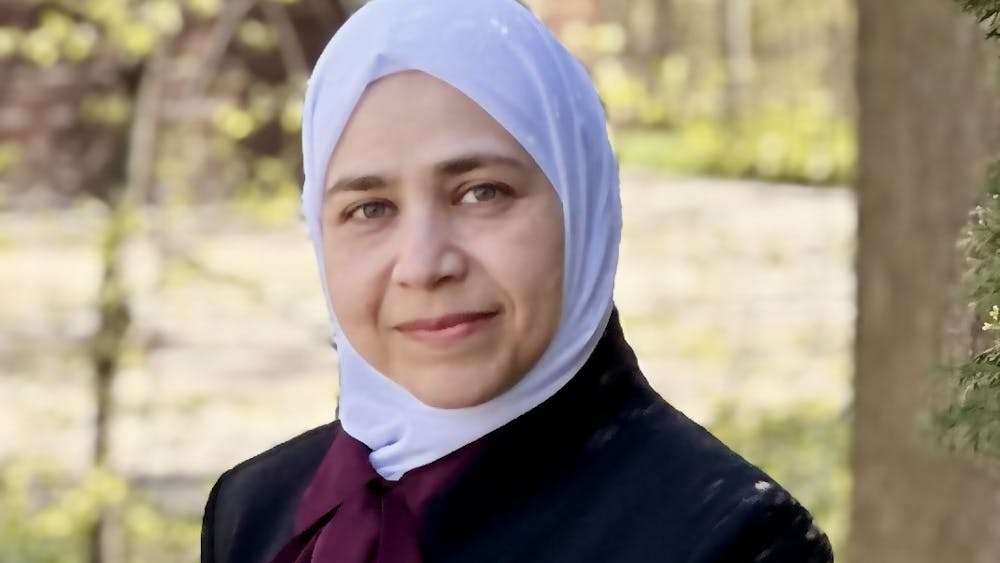COLUMN: If you want a winning football team, the Chippewa Champions Center will help
Priced at $32 million, the Chippewa Champions Alumni Center is a hefty project, to say the least.
Stretching three levels, the building will be home to the Alumni Center and office spaces, an improved training center for student-athletes and a sports medicine complex.
Many non-athletes question the value of the project by asking, what about the rest of us?
Some of those same students showed immense frustration following CMU's 1-11 season under now-former coach John Bonamego.
I understand why some students dislike the idea of spending the $32 million on a football project that could be complete in 2021, but it will help the athletic department as a whole.
"No funds have been or will be taken from other colleges to construct this facility," said CMU Athletic Director Michael Alford. "It's coming all from fundraising. We've been able to go out and identify new revenue streams. Those revenue streams are going to this facility, alumni reserves and some construction reserves. No (academic) units will be touched."
Nonetheless, superior facilities lead to better recruiting which directly translates to on-field performance.
"That's a critical factor for our recruits," Alford said. "We show (recruits) this is coming in the future, and they're very excited about it. Parents are excited about it."
In 1998, CMU debuted the Indoor Athletic Complex and renovated Kelly/Shorts Stadium. The construction cost was $2.2 million when built, which would be $3.4 million in 2018 due to inflation. Over 10,000 seats were added and the press box was updated but, more importantly, the IAC was built.
Just a few years after the debut of new facilities, CMU football saw unprecedented success beginning in 2005. Led by coaches Brian Kelly and Butch Jones, CMU nabbed three MAC championships, two bowl victories and an Associated Press Top 25 poll finish in 2009.
CMU secured a MAC title in 2006, and the team was led by senior defensive lineman Dan Bazuin, senior offensive lineman Joe Staley and senior wide receiver Damien Linson. Those three, along with many other seniors on the 2006 roster, were emerging high school prospects right around the completion of the new facilities.
"You look back after they built the IAC at the immediate effects it had," Alford explained. "That success we had was right after the facility was built.
"Anytime you see a renovation to a facility, it has an immediate impact on your ability to go out and get recruits – showing you're investing in them."
Players came to Mount Pleasant and seemingly took note of turf bay, which at the time, was the only one in the MAC.
In the same way, CMU's staff showed the incoming class of 2019 recruits a blueprint of the Champions Center, and it made an impact. The Chippewas jumped from the No. 9 MAC recruiting class in 2018 to No. 6 in 2019, even with a full coaching staff change.
Two 2019 football signees said the Champions Center was one of the reasons why they picked to attend CMU.
- Offensive lineman Danny Motowski: "Facilities are huge. I'm really looking forward to the Chippewa Champions Center."
- Offensive lineman Cameron Vaughn: "Facilities are very important to enhance the performance of each player to the best of their ability. (CMU's) definitely a plus now that (the facilities) are going to be built."
Vaughn, a three-star prospect, picked CMU over South Carolina and UCF. He said the Champions Center will improve recruiting numbers.
"I feel like it will have a positive effect on recruiting and will be that edge needed to get a recruit to commit to CMU over other choices," Vaughn said.
Every program in the MAC has an indoor practice field, except for Ball State.
There isn't a lot to differentiate between MAC schools other than relationships with coaches and facilities, which it holds such importance to performance on the gridiron.
When a high school football prospect picks a college, he ultimately devotes his upcoming three to four years to live at that school and spend nearly every day at the facilities.
Football players want nice things, just like the average student.
"When you look, that's where our guys spend a majority of their time," Bonamego said. "Compare it to your apartment or home. You want to have the things in your home that enable you to be comfortable."
Looking at CMU's arch-rival, Western Michigan has gone all-in at their football facilities. Former WMU coach P.J. Fleck entered in 2013 and began projects for new buildings. Four years later, the Broncos were among the Top 15 teams in all of college football.
Despite a 1-11 record in Fleck's first season with Broncos, the staff signed arguably the best recruiting class in WMU history and clearly best in the MAC since 2000.
Toledo put in a turf bay just less than a decade ago and later added an end zone facility. Northern Illinois, in the mid-2000s, was one of the first MAC schools to have an end zone building.
The Huskies were mediocre in 2005 when the end zone facility was built, but jumped to produce a 57-13 record from 2010-15. Players signed in the years following the new facilities, proving a direct correlation.
There are other cases, including Bowling Green, Miami (Ohio), Eastern Michigan and Kent State. New facilities are proven to enhance recruiting and win football games.
If all goes as planned, the Chippewas could be back on top in the near future thanks to the Champions Center.









